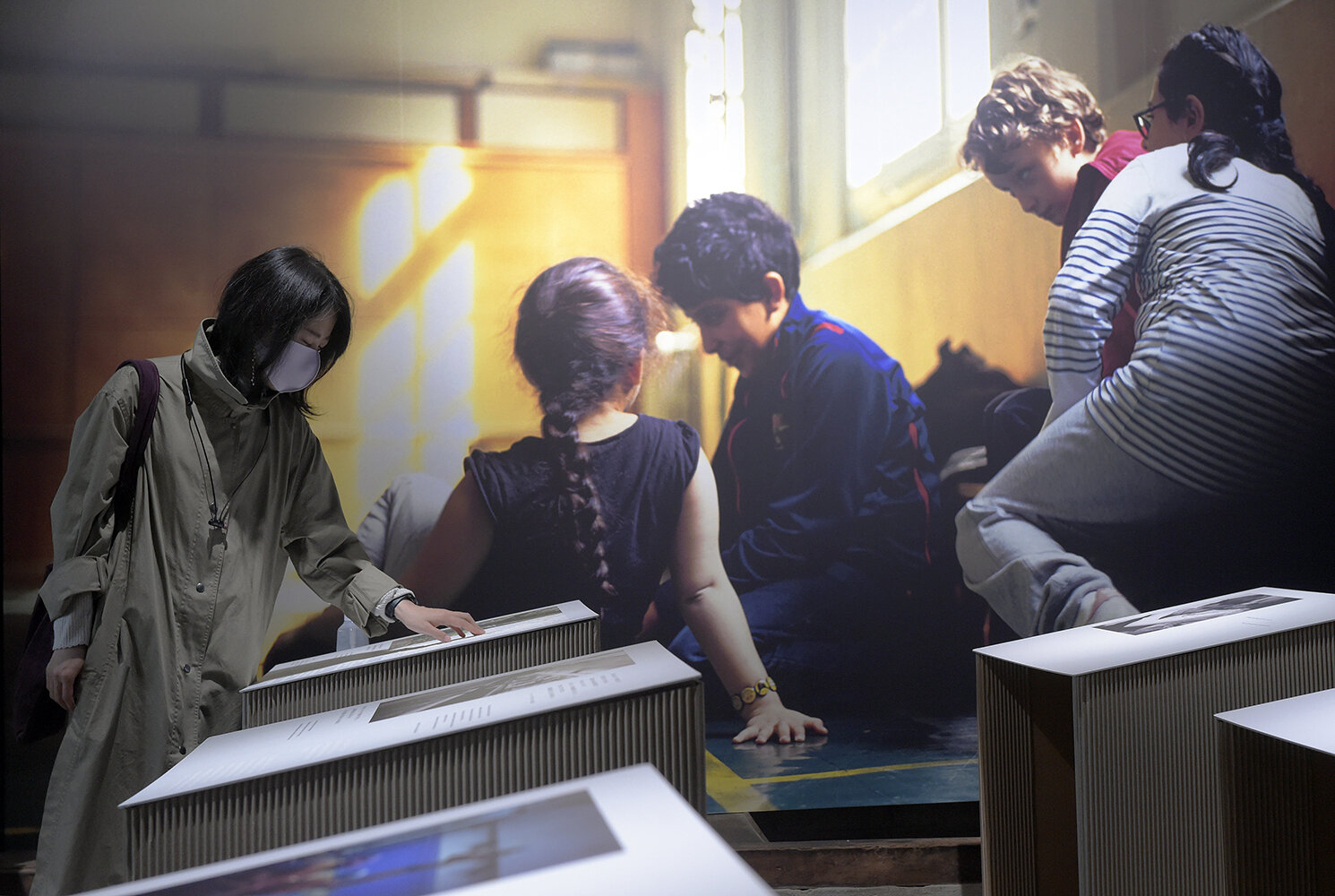Photo credit: ©︎Takeshi Asano / Mikoto Yamagami / Yusuke Okura / KYOTOGRAPHIE
Curator
Fundraising & Partnerships
Development of tactile photograph
Online contents production
Captions & Catalogue Texts
Mediation
Movie Distribution
“Story of a Bridge between Two Worlds“
Marie Liesse
Sep 19 - Oct 18, 2020
Atelier Mitsushima Sawa-Tadori, KYOTOGRAPHIE 2020, Kyoto, Japan
Marie Liesse’s 10-year journey of documenting the children at the National Institute for Blind Youth (INJA) in France began when she found a portrait of a young blind boy, Jean-Lin. Jean-Lin was a close friend to her husband, Arnaud de La Bouillerie and left an immense impression on Arnaud during their shared boyhood and remained a lingering inspiration long after his passing. To trace the memories of this extraordinary character, Marie Liesse visited the Institute that Jean-Lin attended 30 years ago. Over time, she witnessed the forming of the bonds among the students and documented the stories of their joy and anxieties, at the edges of their childhood, as they prepared to enter the world of the sighted.
Her photographs capture the moments that led the children to color their world with new discoveries and imaginations while in the classrooms or afterschool, sometimes quietly on their own, and other times in the presence of their friends. Looking at the children through her lens, Marie Liesse confirms for us all that the desire to be seen and to commemorate life is universal.
For the occasion of KYOTOGRAPHIE, we wished to follow in the footsteps of Jean-Lin, Arnaud de La Bouillerie and Marie Liesse to write our story of a bridge between the two worlds – that of the visually impaired and the sighted. To transcend Marie Liesse’s photographic images beyond its traditional means, we created prints that are to be “seen” by touching. In France, Marie Liesse collaborated with an engraver with visual impairment, Florence Bernard to create embossed prints. While in Japan, I solicited advice from an artist, Takayuki Mitsushima and an associate professor at the National Museum of Ethnology, Kojiro Hirose, who are both blind, to create tactile prints using the UV printing technique developed by Horiuchi Color. These tactile prints were realized through the continual dialogue between both communities of the sighted and the visually impaired with each sharing their interpretation of the original work.
In collaboration with the Museum Access View, an organization in Kyoto that increases access to art for the community of the visually impaired, we also developed a unique way for our visitors to experience the exhibition. We invite both the visually impaired visitors and the sighted visitors to engage with the works of art through each other’s perspective. For the visitors with visual impairments, the works are observed through the words of the sighted, while the sighted observe the works in response to the questions from the visually impaired visitors which may lead them to discover the aspects of the works that they may not have noticed otherwise.
The year 2020 has been an unprecedented time for all of us because of COVID-19 crisis. Many have been experiencing the prolonged physical isolation for the first time. While the tele-communication is available to us, not being able to see our friends, family and colleagues face to face can have a large impact on our mood and trigger us to think negatively during the time of such uncertainties in a crisis. The physical and emotional isolation is something that many members of the blind community face on a daily basis because of the design of the society that caters mainly for the sighted. They always have to take the deliberate steps to change the way they are feeling and actively engage with others.
The photographs by Marie Liesse reveal the moments in which the visually impaired children transcend their feelings of isolation. Might we likewise transcend the feelings of isolation as these children then, as now, confront our fears, renew our faith in ourselves at each moment, and take a step forward? It is through the engagement with other perspectives, and through the collaborative experience of such transcendence, that we might begin to witness more profound transformations inside ourselves.
Catalogue Text: Marina Amada
Press
京都新聞(Kyoto News) Sep 24, 2020
大阪日日新聞 (Osaka News)Oct 9, 2020
THE KYOTO 前編 Oct 2, 2020
THE KYOTO 後編 Oct 3, 2020
KYOTO JOURNAL Oct 14, 2020
ELLE Japan Aug 28, 2020
IMA Review Oct 9, 2020
美術手帖 (Bijutsutecho) Sep 19, 2020
朝日新聞 (Asahi News) Sep 19, 202
トナカイフサコ(Manga strip article by Tanakai Fusako)
THE GUARDIAN Sep 21, 2020
More links on the work











